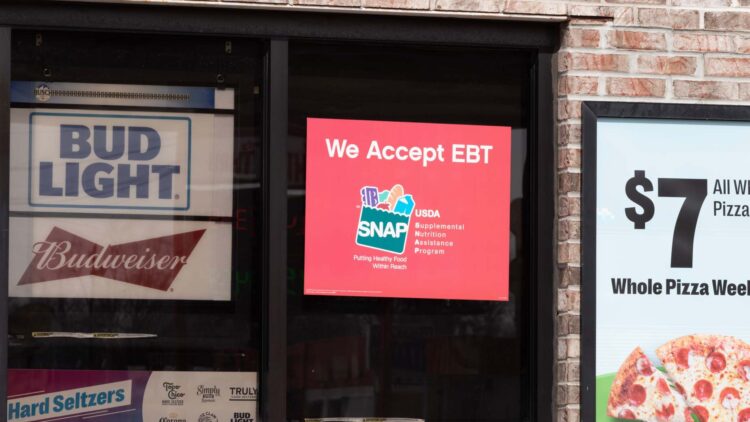Millions of Americans benefit from the Supplemental Nutrition Assistance Program (SNAP), which helps low-income households put healthier food on the table while also helping them manage their finances.
In households when financial resources are insufficient to satisfy these basic needs, SNAP users receive assistance in the form of an electronic benefits card (EBT), which allows them to purchase food at authorized stores.
Learn more about the new SNAP restrictions that will impact thousands of beneficiaries
Given that SNAP benefits are primarily intended to be used for essential food expenditures, it is important to think about what you can buy for the Christmas and New Year’s holidays.
But you may also use SNAP coupons to buy things like plant seeds, protein powder, cold drinks, bottled water, meal replacement shakes, and live seafood that you might not have known existed.
SNAP restricts what can be purchased with EBT cards, including hot prepared foods, vitamins, alcoholic beverages, and non-food products like household goods and pet food, in addition to some items including alcohol, tobacco, supplements, and non-food commodities.
Businesses that accept EBT cards should not accept SNAP benefits for items that are not permitted, even if the customer claims to have an emergency or no other means of payment, according to the Food and Nutrition Service website. Among these are:
- Beer, wine, liquor, cigarettes, or tobacco.
- Vitamins, drugs, and supplements. Don’t forget that an item is deemed a supplement and is not eligible for SNAP purchase if it bears a label including information regarding supplements.
- Live animals (except shellfish, fish taken from the water, and animals slaughtered before being picked up from the store).
- Food that is hot when you want to buy at the store
- Any non-food items such as:
- Pet food
- Cleaning supplies, paper products, and other household items.
- Hygiene items, cosmetics.

How much money do SNAP beneficiaries receive in their monthly benefits?
According to the research, SNAP-receiving families are expected to spend 30% of their net income on food. The maximum benefit, which is determined by the price of USDA’s Thrifty Food Plan (TFP), is also given to families with no net income.
The TFP is the cost of purchasing and cooking a diet that meets the Dietary Guidelines for Americans and is nutritionally acceptable, assuming that low-income households work hard to stretch their food budget.
With USDA’s August 2021 TFP update, which increased SNAP benefits effective October 2021, millions of households can now afford a good, healthful diet.
Additionally, the following are the current payment amounts per household and the anticipated benefit amounts that all eligible households in the US will receive, citing the Center on Budget and Policy Priorities:
| Household Size | Maximum Monthly Benefit,
Fiscal Year 2025 |
Estimated Average Monthly Benefit, Fiscal Year 2025* |
| 1 | $292 | $199 |
| 2 | $536 | $364 |
| 3 | $768 | $594 |
| 4 | $975 | $726 |
| 5 | $1,158 | $845 |
| 6 | $1,390 | $1,018 |
| 7 | $1,536 | $1,116 |
| 8 | $1,756 | $1,317 |
| Each additional person | $220 |
Who is not eligible to receive benefits from the SNAP program?
Certain groups of people are not eligible for SNAP regardless of their assets or income. Those on strike, those without a legitimate immigration status, full-time college students, immigrants with valid immigration statuses, and those with a history of drug-related felonies in some states are some of these groups.
Many adults between the ages of 18 and 54 who do not have children living in the home and who do not have any disabilities are only eligible for three months of SNAP benefits every three years in many parts of the country, and states have a great deal of discretion in extending work requirements to many other SNAP households.
Also See : $1,400 IRS stimulus check: payment dates
